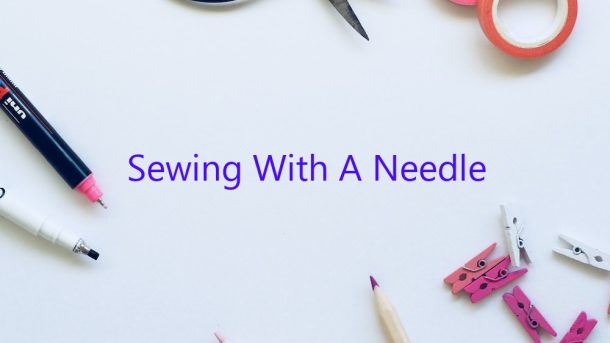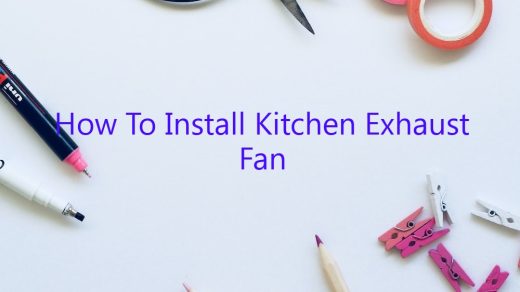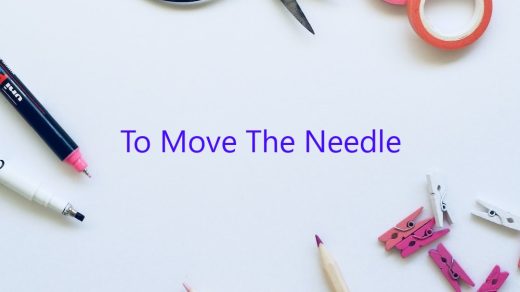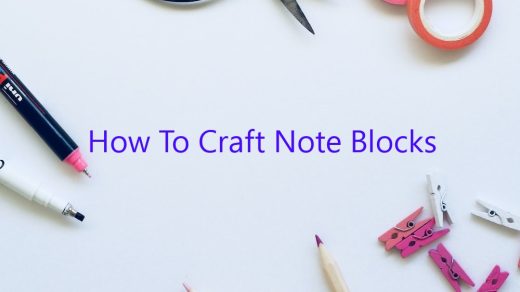Sewing with a needle is a process that involves using a thin, pointed piece of metal or plastic to join fabric together. This can be done by hand or with a sewing machine. There are a variety of different types of needles that can be used for different purposes, including betweens, sharps, quilting, and embroidery needles.
When sewing by hand, the needle is inserted into the fabric, and a thread is then pulled through the hole. The fabric is then folded over the thread, and the needle is inserted back into the fabric close to the original hole. The thread is then pulled tight, and the process is repeated.
Sewing with a needle can be a difficult process, and it can take a lot of practice to get the hang of it. However, it is a skill that can be used to create a variety of different items, from clothes to quilts.
Contents [hide]
What is the use of a sewing needle?
What is the use of a sewing needle?
A sewing needle is a thin, sharp tool used for sewing fabric together. It has a pointed end and a round eye. Sewing needles are available in a variety of sizes, depending on the thickness of the thread they are designed to use.
Sewing needles are used for a variety of tasks, including:
– Sewing fabric together
– Repairing torn fabric
– Appliqueing fabric pieces together
– Sewing on buttons
– Attaching lace or trim
– Quilting
Sewing needles come in a variety of sizes, depending on the thickness of the thread they are designed to use. The most common sizes are:
– Size 9: for very thin thread
– Size 11: for thin thread
– Size 14: for medium thread
– Size 16: for thick thread
– Size 18: for very thick thread
How do you sew with hand needles?
When sewing by hand, you’ll need to use a hand needle. Hand needles come in a variety of sizes and shapes, but all have a sharp point and a hole in the blunt end.
Thread the needle by passing the thread through the hole. You can do this by holding the thread between your thumb and first two fingers, and then using your other hand to insert the needle into the hole. Pull the thread through until the needle is fully threaded.
To sew, hold the fabric taut in one hand and use the other hand to guide the needle through the fabric. Push the needle all the way through the fabric, then pull it through to the other side. Repeat this process, making sure to keep the stitches even and consistent.
Do you sew with needle up or down?
When you’re sewing, should you sew with the needle pointing up or down? There are benefits to both methods, and it really depends on what works best for you.
If you sew with the needle pointing up, the fabric will move more easily under the needle. This can be helpful when you’re sewing a straight line, because the fabric will move more smoothly. However, it can be more difficult to control the fabric when you’re sewing curves, because it will tend to move more easily in one direction than the other.
If you sew with the needle pointing down, the fabric will be more difficult to move. This can be helpful when you’re sewing curves, because it will be more difficult for the fabric to move out of alignment. However, it can be more difficult to sew a straight line, because the fabric will be more likely to move under the needle.
How do you start a needle and thread?
There are a few ways to start a needle and thread. One way is to insert the needle into the fabric and then pull the thread through the eye of the needle. Another way is to tie a knot in the thread and then insert the needle into the fabric.
What needles for hand sewing?
When it comes to hand sewing, there are a variety of needle types to choose from. The type of needle you select will depend on the type of fabric you’re working with, the type of seam you’re sewing, and your own personal preferences.
There are three main types of hand sewing needles: sharps, betweens, and quilting needles. Sharps needles are the most versatile, and are suitable for most fabrics. Betweens needles are smaller and thinner than sharps needles, making them ideal for tight seams and delicate fabrics. Quilting needles are larger and thicker than sharps needles, making them perfect for quilting and other heavier fabrics.
There are also a variety of specialty needles available, such as needles for embroidery, appliqué, and lace. These needles are typically designed for working with specific types of fabrics, so be sure to choose the right needle for the job.
When selecting a hand sewing needle, it’s important to consider the following factors:
-The type of fabric you’re working with
-The type of seam you’re sewing
-Your own personal preferences
Always read the label on the fabric to ensure you’re using the correct needle type. Sharps needles are generally a good all-around choice, but if you’re working with a particularly delicate fabric, it might be worth using a smaller, finer needle like a betweens needle. Quilting needles are best for heavier fabrics, while specialty needles are designed for specific applications.
So, what needles should you use for hand sewing? It really depends on the project at hand, but in general, sharps needles are a good all-around choice, and you can’t go wrong with a trusty pack of needles from your local fabric store.
What are the 7 different types of sewing needles?
There are seven different types of sewing needles: sharps, betweens, quilting, embroidery, topstitching, blindstitching, and darners.
Sharps needles are the most common type of sewing needle. They are thin and have a sharp point, making them perfect for piercing fabric.
Betweens needles are thicker than sharps needles, and have a blunt point. They are ideal for sewing through multiple layers of fabric.
Quilting needles are thicker than sharps needles, and have a sharp point. They are designed for piecing together quilts.
Embroidery needles are thin and have a sharp point. They are perfect for hand embroidery.
Topstitching needles are thicker than sharps needles, and have a sharp point. They are designed for topstitching fabric.
Blindstitching needles are thin and have a sharp point. They are designed for blindstitching fabric.
Darners needles are thin and have a blunt point. They are designed for darning fabric.
How do you sew with a beginner needle?
When you’re starting out in the world of sewing, it’s important to use the right tools. One of the most important tools is the needle. There are many different types of needles, but for beginners, a ballpoint needle is a good option.
A ballpoint needle is designed to sew through fabrics without damaging them. The needle has a round point that helps the needle move smoothly through the fabric. This is important for beginners, because it makes it easier to sew accurately and prevents damage to the fabric.
There are several steps you can take to sew with a beginner needle:
1. Choose the right needle for the fabric you’re using.
2. Thread the needle.
3. Sew the fabric.
4. Tie off the thread.
5. Clip the thread.
6. Store the needle safely.
1. Choose the right needle for the fabric you’re using.
The first step is to choose the right needle for the fabric you’re using. There are different types of needles for different types of fabrics. A ballpoint needle is a good option for beginners, because it’s designed to sew through fabrics without damaging them.
2. Thread the needle.
The second step is to thread the needle. There are different ways to do this, but a simple way is to thread the needle by holding the thread between your thumb and first two fingers. Then, use your other hand to insert the needle into the thread. Gently pull the thread through the needle until the thread is fully threaded.
3. Sew the fabric.
The third step is to sew the fabric. To do this, place the fabric you’re sewing on a flat surface and hold it in place with your non-sewing hand. Use the other hand to guide the needle through the fabric. When you reach the end of the fabric, gently pull the needle through the fabric and continue sewing.
4. Tie off the thread.
When you’re finished sewing, it’s important to tie off the thread. This will prevent the thread from unraveling. To do this, bring the needle up to the surface of the fabric and make a small loop with the thread. Then, insert the needle into the loop and pull the thread tight. Cut the thread close to the fabric.
5. Clip the thread.
The fifth step is to clip the thread. This will keep the thread from getting in the way while you’re sewing. To do this, cut the thread close to the fabric with a pair of scissors.
6. Store the needle safely.
The last step is to store the needle safely. This can be done by placing the needle in a needle case or a magnetic needle holder.




